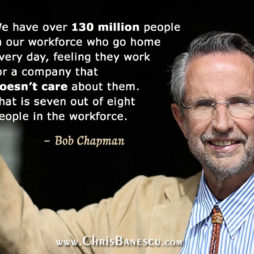American Thinker | by Thomas Sowell | Jan. 8, 2010
Politicians like Barack Obama try to make you believe that someone else will pay the tax he wants to impose. For example, President Obama said he will increase taxes only for those making more than $250,000 per year. Other politicians, at other times, have told us that we will tax corporations rather than individuals, or tax some other out-of-favor group or product (sin tax) rather than the majority of individuals or the general sales tax.
The problem is that in reality, the guy behind the tree is the vast majority of us…yes, the same people who were promised that they would not pay the proposed tax increase. This is quite easy to see in some examples.
Let us look at the simple imposition of real property tax. In many, if not most, jurisdictions, the property tax is levied on homeowners at one rate with certain exemptions and at another rate against businesses that own property and apartment houses. In some jurisdictions, the school tax is also collected this way. Many people believe that renters do not pay this tax (and renters cannot deduct any of this tax from state or federal income taxes). But you’d better believe that renters do pay the tax. They just pay it indirectly as part of their rent.
The apartment house owner has to pass this tax on to his residents, or there would not be enough money in his account to pay the tax. Similarly, any other business that owns property must recover the cost of any property tax or any other tax levied against it by passing it on to its customers in the form of higher prices, or to its employees in the form of lower wages, or to its shareholders in the form of lower dividends. In each case, these people are not the people the tax was levied against, and they don’t get a deduction for paying it — or even a tax statement telling them how much they paid. Best of all, from the politician’s standpoint, most of the people to whom the tax was passed do not realize that they paid it at all.
The fact is that a tax levied against anyone in the economy will soon work its way through the economy, and we will all bear it. We will not fill out a tax form and we will not see it on our receipt, but you’d better believe that we will pay it. We will pay it just like we pay any other expense of the makers, or sellers of anything, or the providers of any service. Taxes might be necessary to run government activities, but taxes are also another expense added to the economy to be ultimately paid by consumers of goods and services.
The tax structure that we have actually adds a lot more expense to the economy than the nominal tax that the government (any government at any level) receives. This is because there are compliance costs associated with paying the tax. The biggest compliance expense is associated with the corporate income tax, but there is some compliance expense associated with the payment of any tax.
Mind you, we are here talking about the compliance cost to the taxpayer, not the collection cost to the government, although that is another thing to consider when trying to devise an efficient tax.
Since any tax levied at any place in the economy will eventually fall to the consumers of goods and services, we should try to collect the majority of tax at the point of sale, where it will fall upon the broadest base of the economy — the consumer, who is the ultimate payer of all of the tax anyway. This may also be the most efficient place to collect the tax. This means less cost of compliance for the taxpayer, and less cost of collection and more actual income to the government or governments concerned.
Moreover, since we know that any tax levied anywhere in the economy (or even by a foreign government) will really be paid by consumers, why not try to reduce the level of taxation and eliminate the more inefficient or high-compliance-cost taxes?
The answer is because the politicians could not then tell us that someone else will pay the tax!
. . . more



